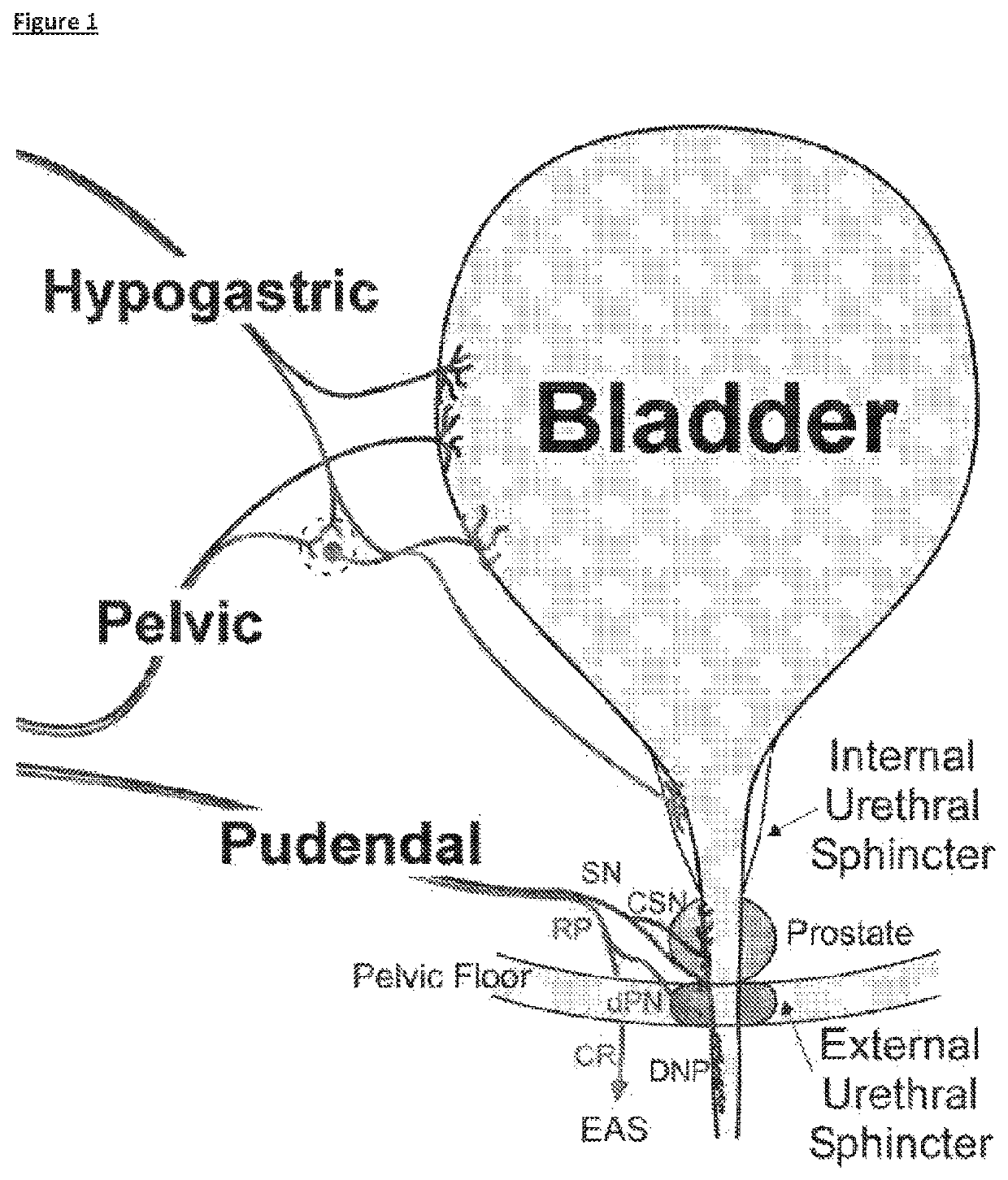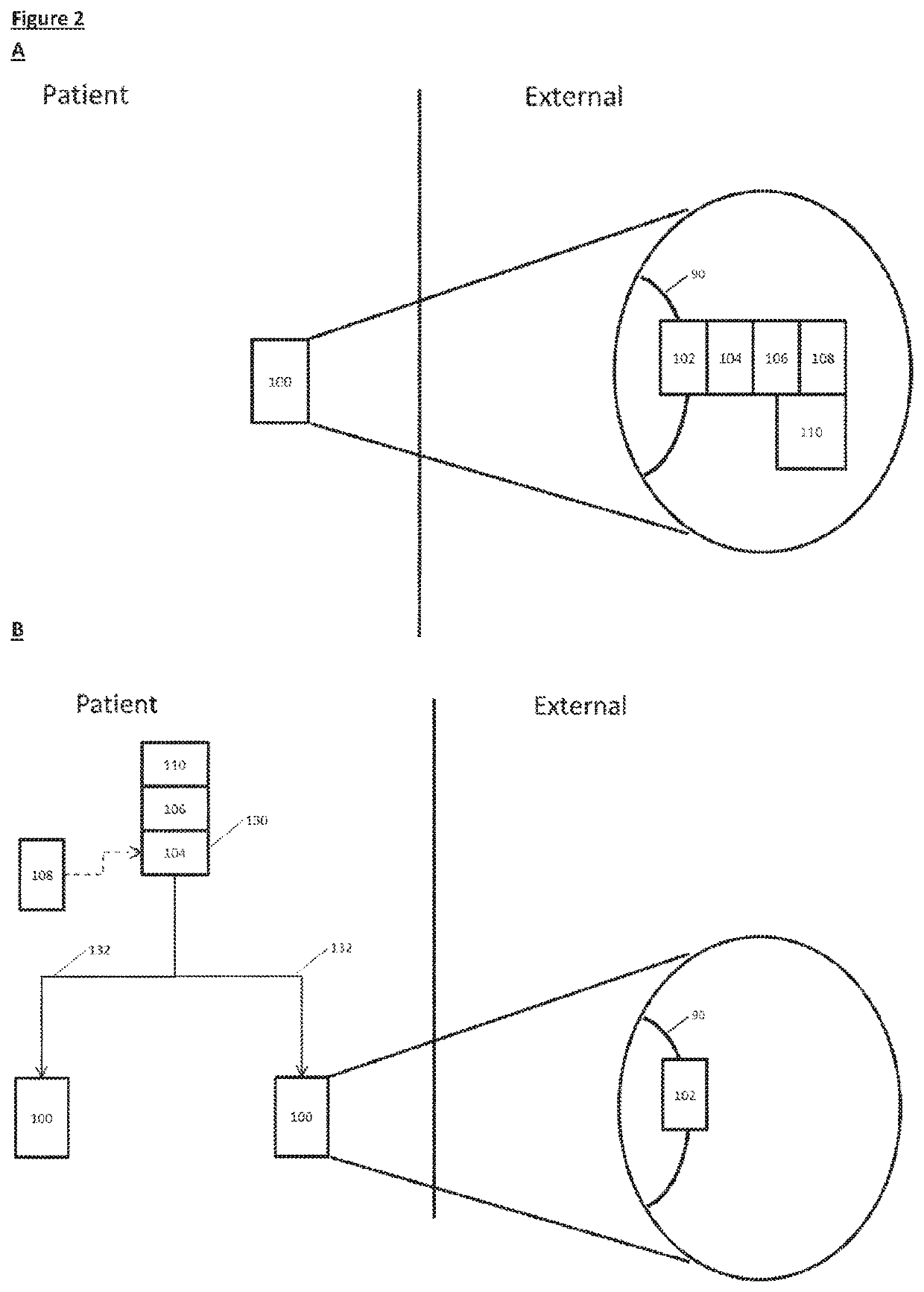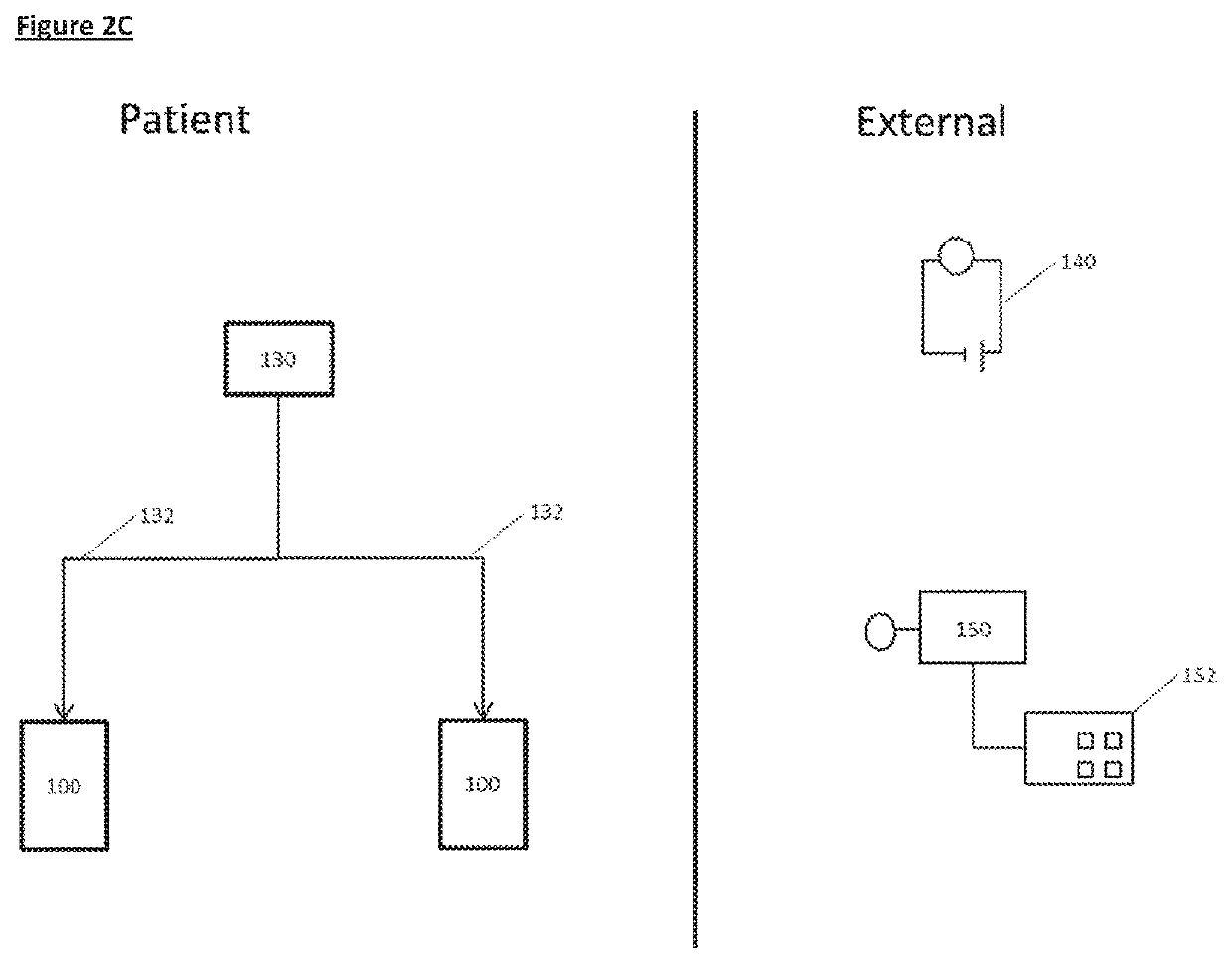State-dependent peripheral neuromodulation to treat bladder dysfunction
a peripheral neuromodulation and bladder technology, applied in the field of state-dependent peripheral neuromodulation to treat bladder dysfunction, can solve the problems of reducing the efficiency of bladder voiding, and achieve the effects of reducing bladder capacity, high intensity, and high intensity
- Summary
- Abstract
- Description
- Claims
- Application Information
AI Technical Summary
Benefits of technology
Problems solved by technology
Method used
Image
Examples
example 1
[0172]In the following examples, an accepted animal model of bladder dysfunction was used: the PGE2 (prostoglandin E2) model, in which installation of PGE2 into rats induces a hyperactive bladder response. In addition, a cat model of bladder dysfunction was used. Cats exhibit a urinary function similar to humans, and thus can represent a representative model for human disease.
Methodology
[0173]Acute experiments were conducted in urethane (1.2 g / kg, SC) anesthetized female Wistar rats using in vivo cystometry (CMG). A PE-90 catheter was placed to measure bladder pressure and for intravesical infusion of saline and PGE2 (100 μM). Bipolar electrodes were placed on the external urethral sphincter (EUS) to measure electromyographic (EMG) activity and a bipolar nerve cuff electrode was placed on the sensory branch of the pudendal nerve for stimulation.
[0174]In a subset of trials after PGE2 infusion, electrical stimulation of the sensory branch of the pudendal nerve was delivered at differe...
PUM
| Property | Measurement | Unit |
|---|---|---|
| frequency | aaaaa | aaaaa |
| frequency | aaaaa | aaaaa |
| frequency | aaaaa | aaaaa |
Abstract
Description
Claims
Application Information
 Login to View More
Login to View More - R&D
- Intellectual Property
- Life Sciences
- Materials
- Tech Scout
- Unparalleled Data Quality
- Higher Quality Content
- 60% Fewer Hallucinations
Browse by: Latest US Patents, China's latest patents, Technical Efficacy Thesaurus, Application Domain, Technology Topic, Popular Technical Reports.
© 2025 PatSnap. All rights reserved.Legal|Privacy policy|Modern Slavery Act Transparency Statement|Sitemap|About US| Contact US: help@patsnap.com



